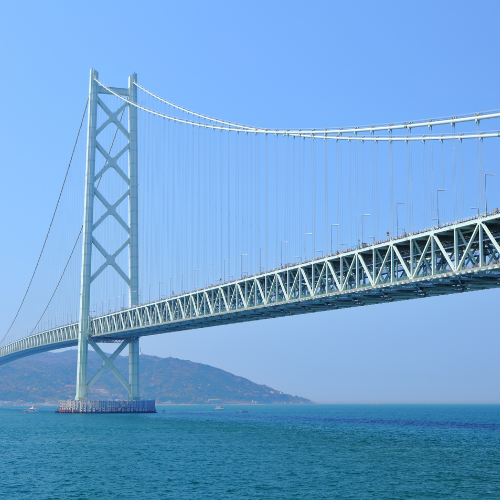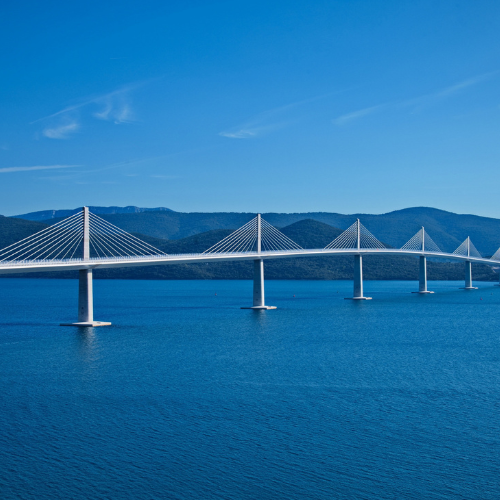Introduction.
In a rapidly evolving nation, the demand for efficient transportation infrastructure is more crucial than ever. As urban populations swell and the need for connectivity increases, the vision of constructing extensive bridges emerges as a vital solution. These engineering marvels not only enhance transportation efficiency but also contribute positively to environmental sustainability. Imagine a bridge that spans vast distances, linking communities, reducing travel times, and generating economic opportunities. This article explores the potential of building long bridges within a nation, examining their advantages, sustainable practices, and innovative funding solutions, all while drawing inspiration from existing projects like China’s Danyang Kunshan Grand Bridge.When planning for such a monumental project, it’s essential to consider its entire framework. Embrace a grand vision and build on a large scale, and success will follow. You’ll find motivation to make it happen.Look for guidance from successful projects that have proven their durability over time.
The Vision: Building Extensive Bridges.
A Historical Perspective.
Throughout history, bridges have been symbols of ingenuity and connection. From ancient Roman aqueducts to modern masterpieces like the Golden Gate Bridge, these structures have facilitated trade, travel, and cultural exchange. The ambition to construct an extensive bridge is not merely a feat of engineering; it represents a commitment to progress and innovation in transportation.
Defining the Bridge.
Currently, the Danyang Kunshan Grand Bridge in China, which spans approximately 164.8 kilometers (102.4 miles), holds the title of the most extensive bridge in the world. This engineering achievement is part of the Beijing Shanghai High Speed Railway and has transformed travel between two major economic centers. However, the desire to build even longer bridges is driven by the need to enhance connectivity, stimulate economic growth, and address climate change.
Advantages of Building Extensive Bridges.
1. Enhanced Connectivity.
A primary advantage of constructing extensive bridges is the improved connectivity they provide. These structures can link urban centers, rural areas, and remote regions, creating essential transportation corridors.
Case Study: China’s Danyang Kunshan Grand Bridge.
The Danyang Kunshan Grand Bridge has significantly reduced travel times between Beijing and Shanghai, facilitating commerce and tourism. By bridging distances, it has fostered economic growth and strengthened cultural ties.
2. Economic Growth and Job Creation.
Building long bridges generates significant employment opportunities. From engineering and construction to ongoing maintenance and operations, these projects can invigorate local economies and create jobs that benefit communities long after the bridge’s completion.
3. Climate Change Friendly Practices.
As climate change presents an urgent challenge, the design and construction of new infrastructure must prioritize sustainability.
Eco Friendly Materials and Techniques.
Utilizing recycled materials, sustainable sourcing practices, and innovative construction methods can help minimize the environmental impact of the bridge. Integrating green spaces can further enhance its ecological value.

4. Shortening Travel Routes.
One of the most compelling benefits of extensive bridges is their ability to significantly reduce travel routes.
Reduced Travel Time and Fuel Consumption.
By providing direct routes between key locations, these bridges can minimize detours and lower fuel consumption. This reduction not only benefits the environment by decreasing greenhouse gas emissions but also translates to economic savings for individuals and businesses alike.
5. Toll Revenue Generation.
Large infrastructure projects often rely on tolling as a means of generating revenue.
Daily Revenue Streams.
An extensive bridge could produce substantial daily toll revenues, providing governments with a reliable income stream. This revenue can be reinvested into local communities, infrastructure improvements, and public services.
The Engineering Feat: Designing an Extensive Bridge.
1. Innovative Engineering Solutions.
Constructing a bridge of such magnitude requires cutting-edge engineering solutions. Advanced materials, wind resistance technologies, and seismic safety measures are essential for ensuring stability and longevity.
2. Overcoming Natural Obstacles.
Extensive bridges must navigate various natural obstacles, including bodies of water, mountains, and urban areas. Engineers must devise creative solutions to address these challenges while minimizing disruption to the environment and local communities.
3. Sustainability in Design.
The design phase should prioritize sustainability, incorporating features such as solar panels, rainwater harvesting systems, and energy efficient lighting, allowing the bridge to operate with minimal environmental impact.
The Economic Impact: Analyzing Financial Benefits.
1. Initial Investment and Funding.
Constructing an extensive bridge requires a significant initial investment. However, various funding mechanisms can be explored to finance the project.
Potential Funding Sources.
Governments can seek funding from international organizations focused on climate change initiatives, such as the Green Climate Fund or the World Bank. These organizations often provide financial support for projects that promote sustainable development and address climate change.
2. Long Term Economic Benefits.
The long term economic benefits of extensive bridges are numerous.
- Increased Trade: Improved transportation routes can facilitate trade between regions, boosting local economies.
- Tourism: The bridge itself could become a tourist attraction, drawing visitors and generating additional revenue.
- Real Estate Development: Enhanced accessibility often leads to real estate development, further stimulating economic growth.
3. Case Studies of Successful Infrastructure Projects.
Examining successful infrastructure projects globally can provide valuable insights into the potential benefits of constructing extensive bridges.
- The Channel Tunnel: This underwater rail link between the UK and France has transformed travel and trade between the two nations, showcasing the power of innovative infrastructure.
- The Golden Gate Bridge: An iconic symbol of San Francisco, it serves as a critical transportation link and a major tourist attraction, demonstrating how bridges can become integral to local identity and economy.
Addressing Environmental Concerns:
1. Impact Assessments.
Before construction begins, thorough environmental impact assessments must be conducted to evaluate potential effects on local ecosystems, wildlife, and communities.
2. Mitigation Strategies.
Developing effective mitigation strategies can help reduce environmental impact. This may include designing wildlife corridors, implementing noise reduction technologies, and ensuring minimal disruption to local habitats.
3. Community Engagement.
Engaging with local communities throughout planning and construction is essential. Ensuring that community voices are heard can build support for the project and address potential concerns.

The Future of Transportation: A Bridge to Tomorrow.
1. Technological Advancements.
As technology continues to advance, the future of transportation is likely to see even more innovations. Autonomous vehicles, smart traffic management systems, and integrated transportation networks could all play a role in the bridge’s operation and efficiency.
2. Global Implications.
Constructing extensive bridges may inspire similar projects nationwide, encouraging investment in infrastructure and connectivity.
3. A Symbol of Progress.
Ultimately, building an extensive bridge would serve as a symbol of progress, resilience, and the human spirit’s capacity to overcome challenges.
Conclusion.
The vision of constructing extensive bridges is not just about creating remarkable structures; it is about fostering connectivity, promoting economic growth, and prioritizing sustainability. By learning from existing projects and implementing innovative solutions, we can build bridges that serve our immediate needs while paving the way for a more connected and sustainable future.
Questions and Answers
1. What is the current most extensive bridge in the world?
The current most extensive bridge in the world is the Danyang Kunshan Grand Bridge in China, spanning approximately 164.8 kilometers (102.4 miles).
2. How will extensive bridges improve connectivity?
These bridges will link major urban centers, rural areas, and remote regions, facilitating easier movement of people and goods, ultimately enhancing trade and cultural exchange.
3. What are the environmental benefits of building such bridges?
Extensive bridges can utilize eco-friendly materials, reduce travel times and fuel consumption, and promote sustainable practices, thus minimizing their environmental footprint.
4. How can governments generate revenue from these bridges?
Governments can generate daily revenue through tolls, providing funds for maintenance, operational costs, and reinvestment in local communities.
5. What role does community engagement play in the project?
Community engagement is essential for addressing local concerns, gathering support for the project, and ensuring that the needs and voices of affected communities are considered throughout the planning and construction phases.
